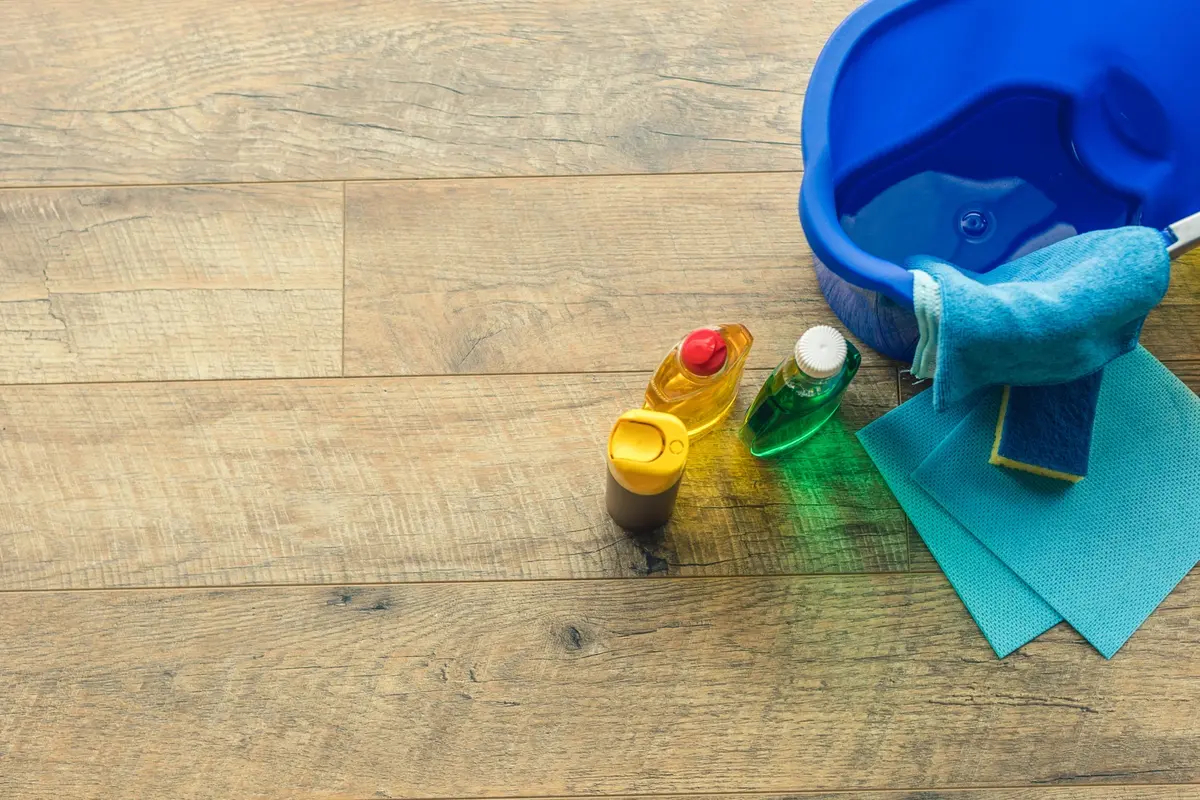Painting
How to Properly Disinfect Hardwood Floors

Hardwood floors are a stunning addition to any home, offering durability and timeless elegance. However, they can also be a breeding ground for germs and bacteria, especially in high-traffic areas or homes with pets and children. Knowing how to properly disinfect your hardwood floors can help maintain their beauty while ensuring a hygienic environment. Here’s a guide to disinfecting hardwood floors effectively and safely.
What’s the Difference Between Cleaning and Disinfecting Hardwood Floors?
Before diving into the disinfecting process, it’s important to understand the distinction between cleaning and disinfecting. According to the Centers for Disease Control and Prevention (CDC), cleaning involves physically removing dirt and germs from surfaces using soap and water, followed by rinsing. However, when it comes to hardwood floors, it’s crucial to dry them well after cleaning to avoid warping and mold growth, as water left to pool on the wood can cause damage.
On the other hand, disinfecting goes a step further by killing or inactivating germs. Disinfectants typically contain chemicals like bleach or alcohol that destroy the bacteria or viruses. It’s essential to clean the floor first before disinfecting, as this ensures that dirt and grime are removed, allowing the disinfectant to target the remaining microorganisms effectively.
Should Hardwood Floors Be Disinfected?
Whether or not you should disinfect your hardwood floors depends on your needs. Regular cleaning may be sufficient for everyday maintenance. However, in situations where there’s an illness outbreak or areas where children and pets often track in dirt, disinfecting the floors can be a beneficial step. It’s crucial to use the right products and techniques, as harsh chemicals and excessive moisture can damage the wood’s finish.
How to Disinfect Hardwood Floors
Here’s a step-by-step guide to disinfecting hardwood floors properly:
- Sweep or Vacuum the Floor
Start by removing any dirt, dust, and debris from your floor. Use a broom or a vacuum to clean the surface, ensuring you reach all corners and under furniture. This step is important before applying any disinfectant. - Dilute the Disinfectant
Many disinfectants come in concentrated form, so be sure to dilute them according to the manufacturer’s instructions. Using too much product can leave a residue on the floor, or worse, damage the wood’s finish. Stick to the recommended amounts for optimal results. - Apply the Disinfectant
Use a mop or a microfiber cloth to apply the disinfectant to the floor. Ensure that the mop or cloth is well-wrung out to avoid excess moisture pooling on the surface. For high-traffic areas, consider using Clorox Disinfecting Wipes, which are safe for wood floors and can be a quicker alternative. - Allow to Sit and Rinse
Let the disinfectant sit for the recommended time, as per the product label, to ensure it has enough time to kill germs. Afterward, rinse the floor with clean water using a well-wrung mop or cloth to remove any residual disinfectant. - Dry the Floor
Finally, dry the floor thoroughly with a clean, dry cloth or mop. Avoid leaving any moisture on the surface, as it can cause the wood to warp or cup over time.
Keeping Your Floors Germ-Free
Once your hardwood floors are clean and disinfected, maintaining them is crucial. Regular sweeping or vacuuming can help keep dirt and dust at bay, and it’s also a good idea to remove shoes at the door to prevent the tracking of germs. Proper care will not only help maintain the health of your floors but will also ensure a germ-free, hygienic environment in your home.
